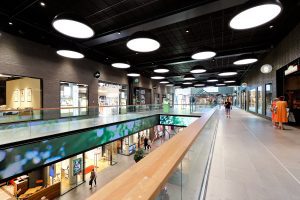…Urbanization is expected to continue rising in both the more developed and the less developed regions so that, by 2050, urban dwellers will likely account for 86 per cent of the population in the more developed regions and for 64 per cent of that in the less developed regions. Overall, the world population is expected to be 67 per cent urban in 2050…
Everyone wants to head for the cities. Cities are what dreams are made of. Three-fourth of world’s population wants to be crowding in its cities in less than four decades from now – the most massive exodus of its kind in human history.
A big city is a pulsating place of incessant action and animation – a zillion moving parts of a complex system in a dynamic environment. A goof here or a gaffe there can hit a service or system, impacting millions of taxpayers, already seeking accountability for what they pay for.
Then what is a Smart City? A city is known by its efficiency – how it manages energy and makes it available round the clock, how it ensures water for everyone, how it runs its public services, how it controls construction, how it maintains and manages its buildings, how it operates its transportation system and so forth.
Clearly, technology has a key role in making cities smart with its solutions for efficient management and integration of a city’s various operating systems. However, it has to be driven and directed by conscientious and capable governance.
“The built environment represents the greatest single challenge and opportunity for addressing sustainability in the world today. The fact is that the current paradigm for the design, construction and maintenance of architecture and cities embodies an enormous and unsustainable carbon footprint. However, it is an even greater fact that the built environment also embodies legacies capable of serving as a matrix of revolutionary potential for new and sustainable sources of energy, water and food.” (From the article “Towards Sustainable Architectures for Cities as Regions” in World Energy Monitor by Juan Blanco Ruiz, Ph.D., Director of Environments and Habitats, World Energy Forum)
How smart a city is may be evaluated by getting answers to questions like:
- Are electric utilities adopting smart grid solutions to manage Demand, Distribution, Metering, Consumption, Operational Data etc.?
- How many public buildings are energy-efficient and have implemented Energy Performance Contracting, On-Site Energy Management Solution?
- Are smart network solutions used to manage water infrastructure?
- Are traffic, tolling, tunnels etc. operated by smart and integrated smart mobility network solutions?
- How are Municipal Services being run, are they using smart solutions to manage services like sanitation, education, food & health, public order, weather forecasting, parking, street lighting and so forth.?
- How well are all the city’s systems integrated to make all parts – and the system as a whole – running smoothly for all its stakeholders?
Smart is what smart does. Cities have to be supermodels of efficiency, friendliness and preparedness – on a mass scale. As populations migrate inexorably to urban agglomerations, cities need to visibly – and intelligently – equip themselves to face the increasing demands placed on them.
City planners and administrators need to work to meet the redoubtable challenges, proactively, with long-term vision and above political expediencies, in order to future-proof city systems and services, so they can cater to – and not crack under – public pressure.

Conversation
I am the Marketing and Sales Manager for Del-Air Electrical (www.delairelectrical.com) in Orlando, Florida. Renewable energy is top of mind in our city. Electric cars are here but not widespread. As an electrical contracting company our electricians are constantly educating homeowners and business owners on the benefits of going more green with their energy. We do install energy efficient lighting and offer other electrical upgrades so consumers can be more energy efficient and trim their energy bills. Our city is trying to improve our energy efficiencies. Construction has increased this year in Orlando so builders are offering more green energy options.
Absolutely, way to go, Joe! Thanks for your comments. Surely, stakeholders like you can make quite a difference as the point of contact in many installations. It’s great you’re educating people on energy efficiency solutions.
Why energy efficiency? Simply because we are consuming more energy than we need to. And our resources are exhaustible and our processes are causing global warming. WIth energy efficiency we can limit pollution and conserve non-renewable energy sources, while ensuring the energy required for our development needs.